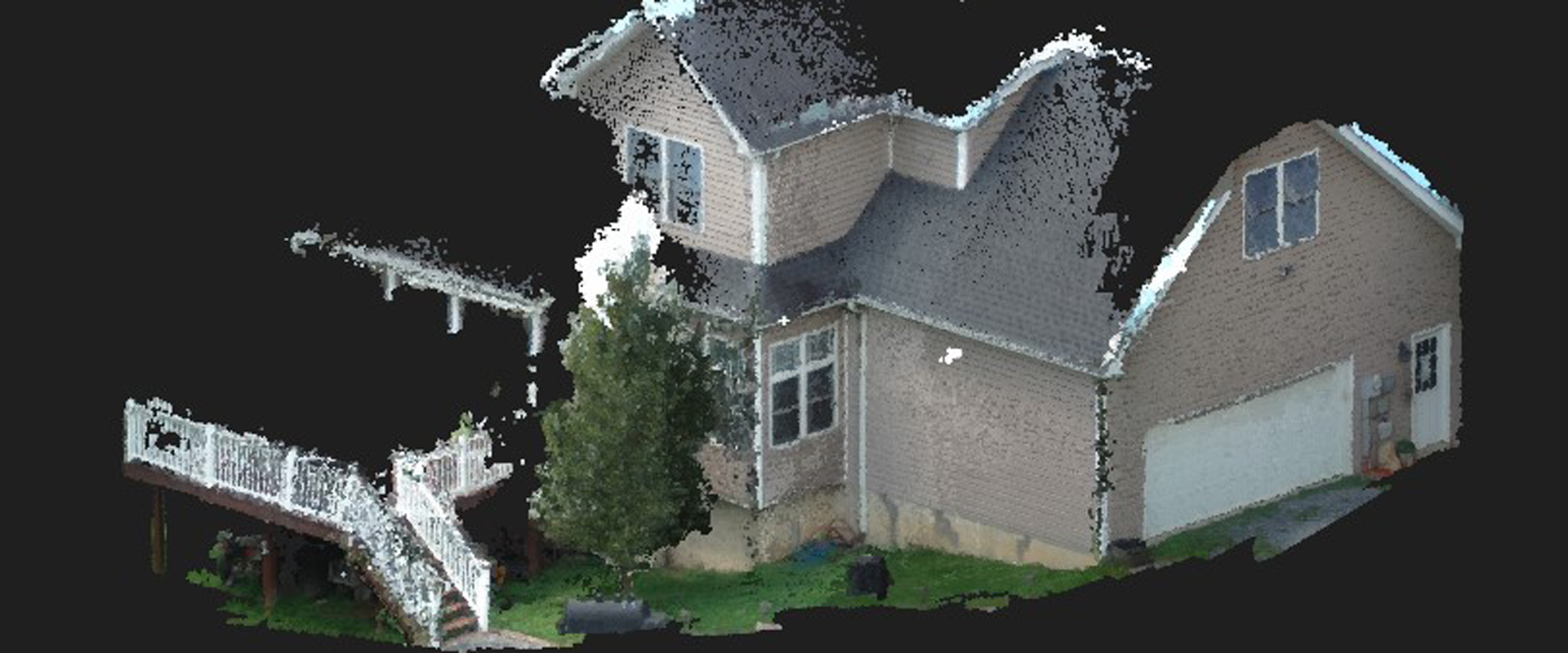With the ability to generate point clouds from images, is laser scanning becoming obsolete? The answer might surprise you.
The ability to generate point cloud data from images has led to a dramatic increase in the use of unmanned aircraft systems (UAS, also called UAVs or drones) and other photogrammetry sensors over the last several years. Recently, the introduction of the Leica GS18 I GNSS smart antenna with visual positioning—which can also be used to generate point clouds from images—has many surveyors and other professionals wondering if the latest generation of imaging sensors is replacing the need for LiDAR and 3D laser scanning.
This question highlights a common misconception about point clouds, says Tim Kerr, senior geomatics support engineer for Leica Geosystems US/Canada. “Point clouds from images are useful in engineering, surveying and construction, but there are many applications where the high-precision modeling-grade point clouds obtained from LiDAR solutions such as the Leica ScanStation P-Series, RTC360 laser scanner, or a scanning total station like the MS60 MultiStation are imperative,” he explains in a recent webinar. “The quality of the point clouds from photographs isn’t a direct substitute.”
Unlike laser scanning, which measures at high speed as it captures information on the surrounding environment, the dense point clouds derived from photographs are really a secondary dataset. Software is required to create the point clouds from the images. As a result, the quality of photo-derived point clouds is often more along the lines of mapping-grade or standard RTK positioning quality. “They are a great aid in the visualization of a project—such as mapping obstructions, volumes for trenches, and stockpiles,” he says. “But they are not the same as point clouds derived from laser scanning.” (RELATED: Can you achieve survey-quality results with an unmanned aircraft system?)
A Point Cloud Comparison
A comparison between datasets can help illustrate this principle. The first dataset (below) shows a point cloud derived from a GS18 I image group that has been processed at full resolution.

The next dataset (below) shows a point cloud captured with an MS60 MultiStation—a true LiDAR image that is obviously much sharper and crisper because it has been captured at high precision rather than created from a photograph.

However, overlaying the colorized point clouds from the two sensors (below) produces a surprising result: The two datasets complement each other. Notice the grass in the front of the image that was missed in the LiDAR point cloud but captured in the point cloud derived from the GS18 I image group.

You’ve Got a Point
Rather than replacing laser scanning, point clouds derived from imaging can enhance LiDAR and provide another perspective.
The real power of the imagery, however, isn’t necessarily in the point cloud, says Bob Kilburn, Leica Geosystems’ product and applications manager for surveying and engineering in US/Canada. “The sensor fusion in the GS18 I—the seamless integration of the inertial measurement unit, GNSS and imaging sensor—gives us the ability to drill down into single point measurements from images in the field and office. That’s a game-changer.” (RELATED: Interactive PDF Answers FAQs About the GS18 I GNSS RTK)
With the images, you can immediately go through and validate what you captured or see what you missed. “You can see it in 3D and pull discrete measurement points right from the images,” Kilburn explains. “You can also pull additional points from the imagery later without having to return to the site. For example, if you come back with the data and then find out the engineer really wanted something else, you can extract that from the imagery to survey grade without having to go back to the site. That becomes a huge efficiency gain.”
As always, understanding the project requirements and deliverable is key to choosing the right technology—or, in some cases, the combination of technologies—that will provide the best solution. “GNSS with visual positioning doesn’t replace LiDAR but is an enhancement and a different method we can use to increase surveying safety and efficiency,” Kerr says. “There are places a scanner can’t see from the ground. There are places on the ground a drone can’t capture from the air. There are situations where flight restrictions or the need for oblique imagery or tight control eliminate the use of drones. Advances in hardware and software now come together seamlessly to enable surveyors to tackle almost any project, regardless of the type and level of quality needed. That’s the real value.”
To talk to one of our experts and learn more about solutions to maximize surveying productivity, please contact us .
Learn More About the New GS18 I GNSS RTK Rover in These Virtual Events




